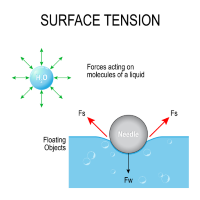Every breathe we take
P=2T/R
Pressure equals 2(tension)/(radius)

Breathing could possibly be the only thing we can agree upon. It simply benefits our being. I can’t imagine a published news opinion, promoting mouth and shallow breath.
The inhale and exhale is just a little more complicated and important than we choose to credit. In fact, every breath is an opportunity to embrace and to live a healthier life.
I am aiming to choose differently and start to with a question.
Why exhaling seems more passive than taking a deep breath in?
When we inhale, the breath shifts the diaphragm inferiorly, decreasing the pressure in the lungs so that it is equal to the pressure in the air around us. We must work to decrease the internal pressure.
When we exhale, the diaphragm returns to resting position. The pressure in the lungs increases, allowing air to be pushed out.
Another element that decides passive exhale resides in the surface tension of the alveoli (tiny air sacs of the lungs for gaseous exchange). Surface tension is the pressure of the water molecules that exists in the alveoli. The closer these molecules are to each other, the tighter the attraction becomes. This pressure makes inhalation an active process as the molecules need to be actively separated. The less we breathe deeply, the smaller the drops of water become and the greater the surface tension becomes.

Surfactant is one of the reasons that we can breathe deeply. It is a chemical made from the alveoli, called surfactant. It helps to keep the water molecules larger and therefore decrease the surface tension. Interestingly enough is, when we take big inhales, use our diaphragm and accessory respiratory muscles fully, we increase the surfactants ability to keep the water molecules from pulling in too small. Deep Breathe.
P=2T/R
Pressure equals 2(tension)/(radius )
